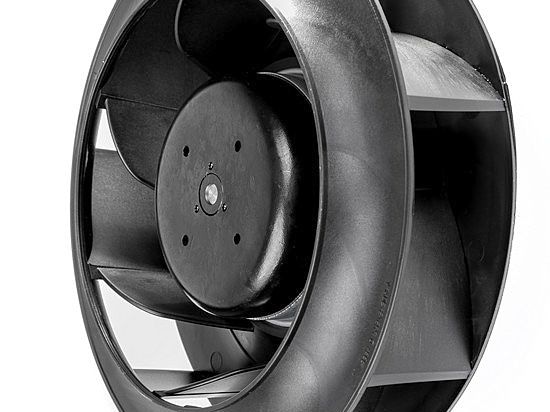
#Product Trends
ETRI axial fans assembled in series or parallel
Air flow adapted to ventilation requirements
We can increase the efficiency of our high performance ETRI axial fans by assembling them specifically to suit your ventilation needs, pressure and available space in your facility.
The area to be ventilated or the power of the equipment to be cooled determine the levels of air flow required. The static pressure level differs from one application to another: the type of installation generates a more or less strong pressure loss that the fan will have to compensate to perform its role properly. The assembly of ETRI axial fans in series or parallel is a solution that we propose to adapt the air flow or the pressure supported.
- A single axial fan is composed of a motor, a propeller and a rectifiying housing.
- The ETRI fans assembled in series have an additional rectifiying housing at the air outlet. In this assembly, there is therefore one motor, two propellers and two rectifiying housings. In this case there is only one air inlet and one air outlet. The static pressure delivered by the fan is about twice as high compared to a single axial one while providing the same airflow.
- Two ETRI axial fans, assembled side by side, form a parallel assembly. The assembly has two motors, two propellers and two rectifiying housings. In this configuration there are two air inlets and two air outlets. This assembly is suitable for applications with low static pressure but high air flow requirements. With a parallel assembly, the air flow supplied relative to an axial fan alone is approximately doubled at equal equal pressure.
- We even go further to meet the specific needs of an installation: we propose the assembly of two propellers with a single rectifiying housing (what we call «1.5» mounting). The air flow rate of a single axial is sometimes insufficient and that of a double axial in series, too high. That’s why we developed a ventilation solution with two impellers for one single rectifiying housing.
Our aeraulic curves illustrate the differences in air flow and static pressure between the various assemblies.
The below table details the proportional differences in air flow, static pressure, power and sound levels between the different assemblies:
AIRFLOW PRESSURE POWER ACOUSTIC
m³/h Pa W dB(A)
Simple 1 1 1 1
Series 1 ~ x2 ~ x1,6 ~ +5
Parallel ~ x2 1 ~ x2 ~ +3
1,5 1 ~ x1,6 ~ x1,4 ~ +5
In addition to these assemblies, we can add fastening flanges specifically tailored to our customers' interfaces.
Our technical and sales teams are at your disposal from the beginning of your project to develop the ventilation solution that will perfectly fit your application.






